The Utility Network: Key to Digital Transformation for utility Industries
Written by Cyient 17 Oct, 2023
Utilities across the globe face major challenges due to aging infrastructure, changing regulations, evolving asset portfolios, decentralized systems, and non-compliance in doing business sustainably. As a part of their digital transformation journey with a new business model, having alternative energy sources as a means to ESG compliance, or as part of acquisitions, enterprises call for asset portfolio rationalization with an enterprise-wide single-source-of-truth asset network geodatabase as the key element.
A utility network, a comprehensive data model for utility assets and network, can well fit the bill. It helps build a single-source-of-truth system encompassing business rules and logic to ensure consistency, integrity, and security of the end-to-end geospatial data, while bringing in operational efficiency, productivity, resiliency, and sustainability. This comprehensive framework is designed to model, manage, and analyze the utility networks of electric, water, gas, or telecommunications systems and components that make up the system, such as wires, pipes, valves, zones, devices, and circuits. It is cost-effective and supports the delivery of resources to customers safely and reliably and quick restoration from outages.
As per Esri Inc, 250 utilities globally are yet to initiate work on migration of Geometric Network data to a Utility Network (UN). Utilities face three major challenges that calls for UN migration migration:
.png)
Why a utility network wins over a geometric network
A utility network, with its powerful data model has a collection of domain networks plus a structure network. While, a Geometric Network comprises of independent layers with no spatial relations inbuilt, including associations or containment, an organization specifies the set of domain networks that it manages when it configures a utility network. The data model also lets us define associations across domain networks and enable tracing analysis across these domains. The overall network model is shown below.
Benefits all stakeholders in the ecosystem—owners with financial performance, customers with reliable services, and employees (and contractors) with assured and efficient safe operations with minimal field visits. A utility network primarily helps—
- Create and edit features and objects that model every type of utility equipment
- Discover how features and objects in the network are connected
- Trace how the supply flows through a network
- Provide an operational view of how all the dynamic devices of the utility network are configured
Some of the key advantages of a utility network over a geometric network are:
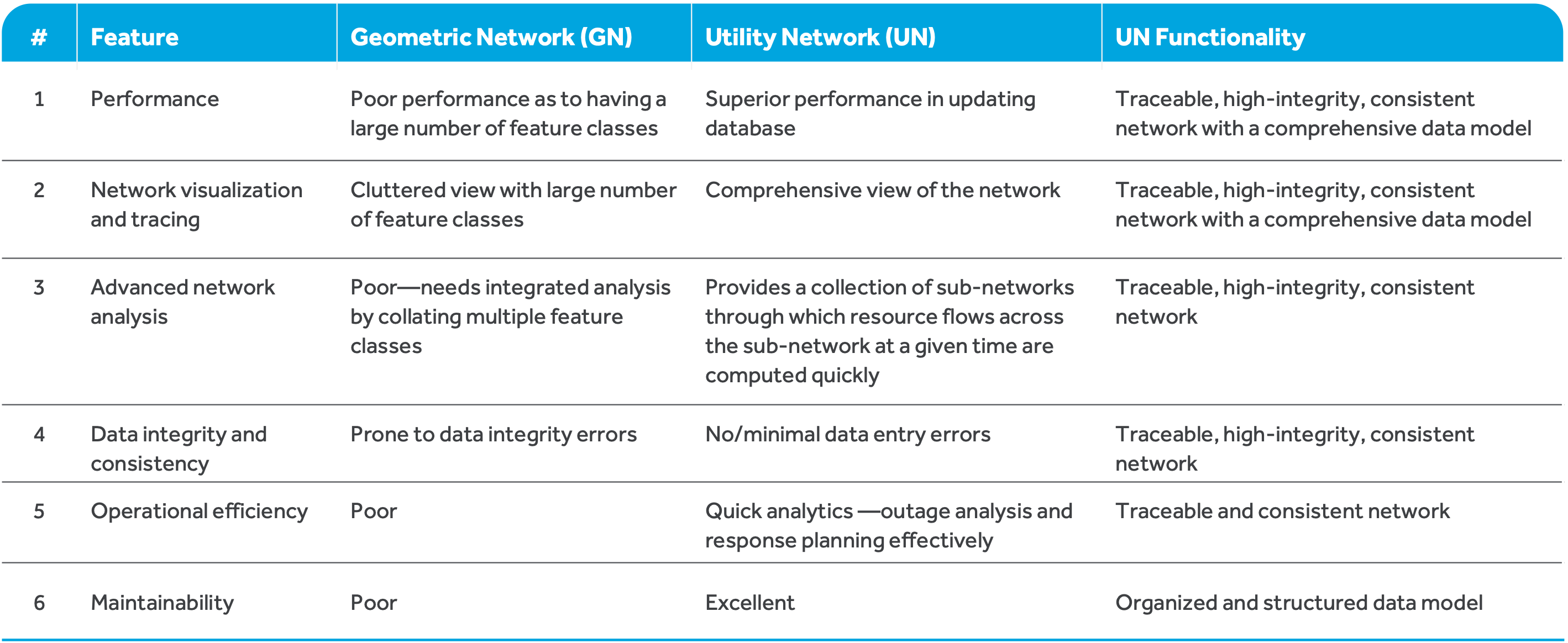
Components of a utility network
A utility network is a collection of domain networks plus a structure network. An organization specifies the set of domain networks that it manages when it configures a utility network. The data model also lets us define associations across domain networks and enable tracing analysis across these domains. The overall network model is shown below.
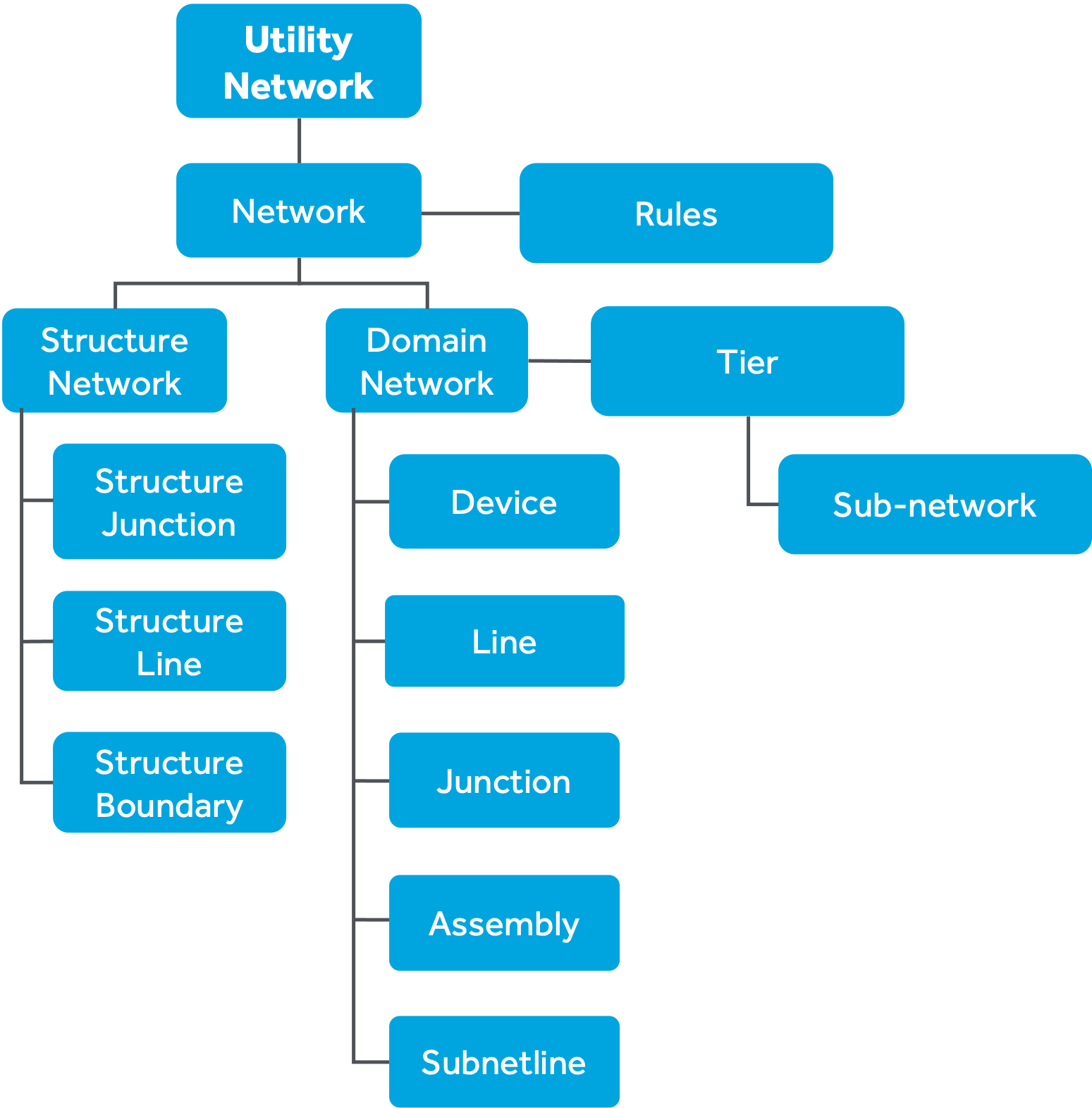
- Domain network: Industry-specific collection of feature classes and nonspatial objects to represent the assets of industries; allows modeling of large, logically separate sections of the enterprise. For example, an electric utility network can have one or more domain networks—transmission and distribution.
- Structure network: Represents the classes that support the devices and lines that convey a resource in a domain network. For example, an electric network has poles, pads, cabinets, and other structural features that are utility assets but do not directly carry the delivered resource.
- Sub-networks: Part of the network that can be treated as an individual entity and can be analyzed as one. An electric distribution circuit or feeders are examples of a sub-network.
- Network tiers: Segregate and manage the overall network architecture, which could be either hierarchal or partitioned subnetworks. They define a collection of individual sub-networks that share the same properties and adhere to the same restrictions based on certain rules.
a. An electric network follows a partitioned sub-network—a medium voltage sub-network is distinct from a low voltage subnetwork and does not share features.
b. For example, a gas utility typically defines a pressure tier and valve isolation tiers with nested sub-networks. A single pressure sub-network can have several valve isolation subnetworks. - Asset group and type: This organizes assets as classes of assets of the network model as a hierarchical design engineered for maximum efficiency by limiting the number of feature classes and uses attribute domains and subtypes that are built-in for each of the utility network feature classes.
- The connectivity model allows a utility to define exactly how each part of a utility system is connected. The features that touch each other and offset from one another are connected.
- The containment model helps model assemblies of features such as a cluster of electrical devices. A switch cabinet, for example, contains bus bars, switches, breakers, and control devices.
- Terminals: These are logical connections that control how features connect to one.
- Data integrity checks: Quality checks carried out for data consistency and integrity, presented below.
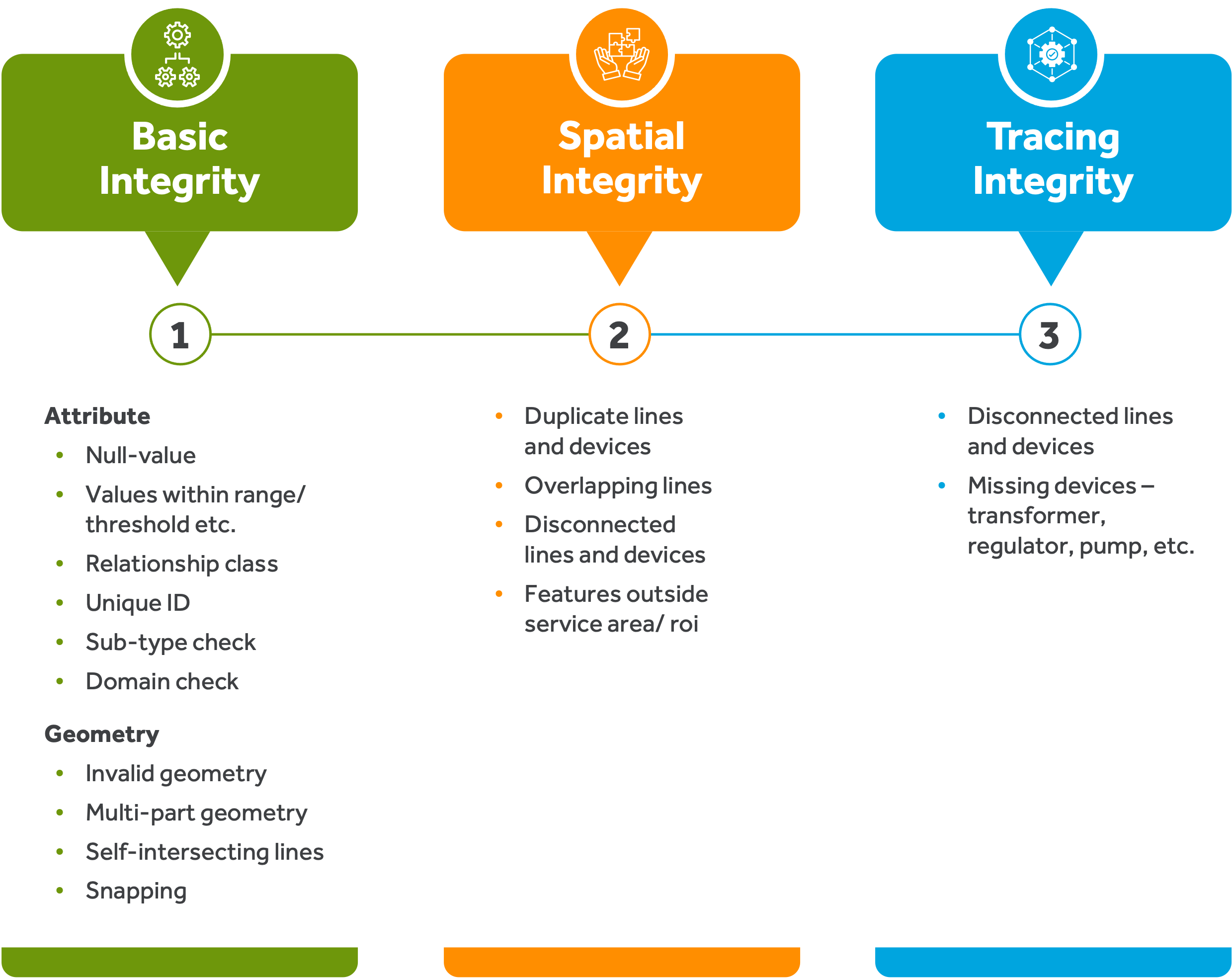
Enabling digital transformation in utilities
A GIS with its UN data model brings in synchronization among disparate systems of an enterprise—ERP (enterprise resource planning), EAM (enterprise asset management), EMS (energy management system), SCADA (system control and data acquisition) and ADMS (advanced distribution management system) and provides end-to-end IT and OT of the asset network. The service-based architecture eases secured integration with these supporting systems. Some of the key features are listed below.
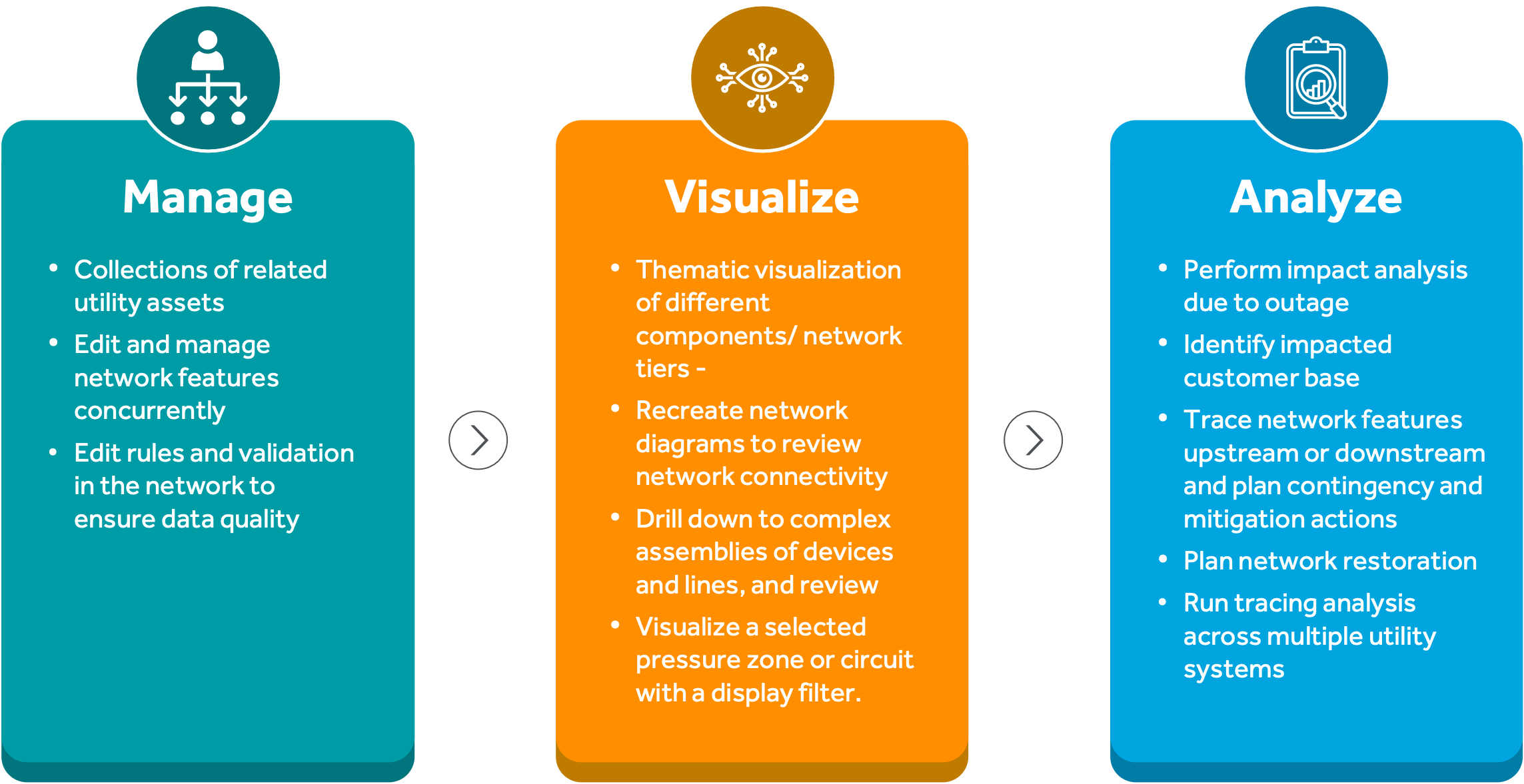
Cyient understands utility data in terms of consistency, integrity of the networks, systems, and operations, being part of the digital transformation journey of its large customer base. With the release of UN from Esri, Cyient has built internal competency in migrating legacy geometry network data to the utility network and has successfully addressed problems and implementation for customers. From addressing supply and distribution issues to compliance challenges, we help utilities meet data and quality requirements that drive advanced distribution management systems. The workflow for an end-to-end migration process is shown below.
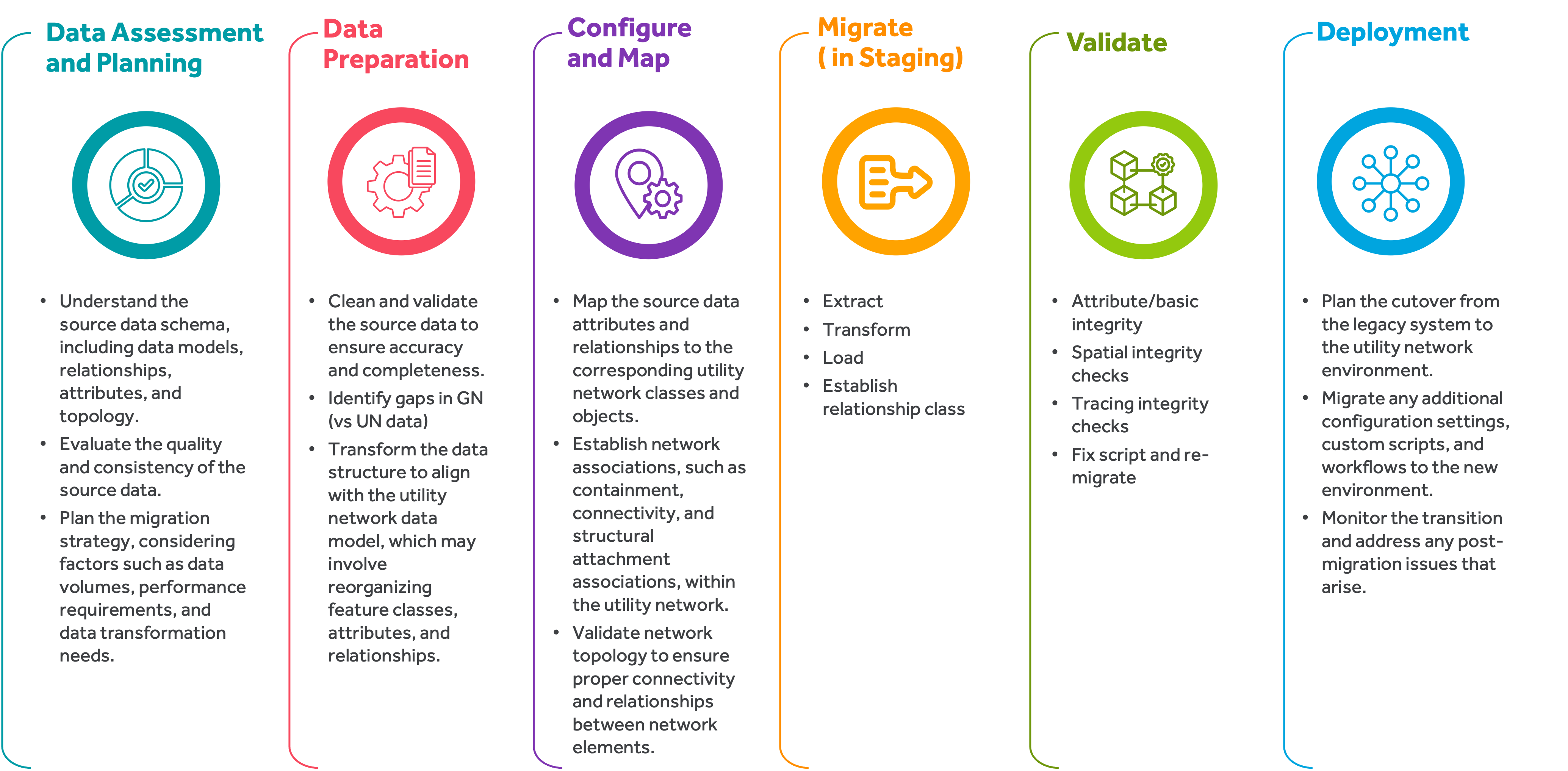
Our experience of working with a large customer base has helped us successfully deliver migration projects with implementations of business rules and customize business processes effectively to ensure a smooth transition and migration with no data loss while ensuring consistency and integrity of data as per the UN data model.
About the Author
Nihar R Sahoo is a PhD in Geosciences and Mineral Exploration with specializations in GIS, Remote Sensing, Applied Statistics and Enterprise Architecture, and has over 23 years of industry experience. His interest areas include building end-to-end development and deployment and operationalization of geospatial solutions with earth observation and allied geospatial data from across industries.
.png?width=774&height=812&name=Master%20final%201%20(1).png)